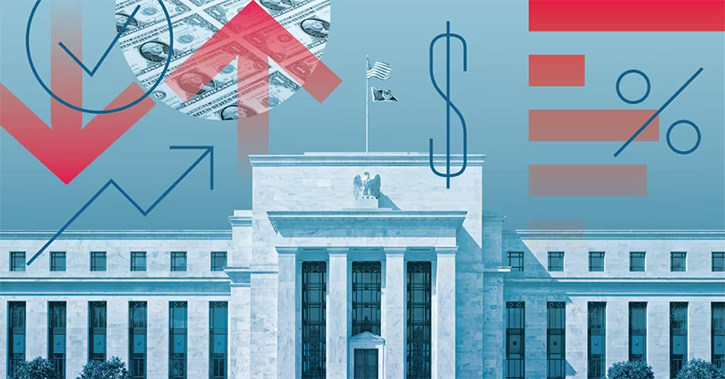Is there anything the federal government or the Bank of Canada can do to reduce the impact of oil on the loonie?
Daniel Schwanen: When oil and commodity prices are high, everybody basks in the benefits from that, because as we were saying, Canadians, for what they produce, they get a higher price on the world market. So it's like our national wage goes up. When it goes down there are reflections, certainly at the government level: “Where did we go wrong? Maybe we did put too many of our eggs in that one commodity basket.” And now the word “diversification” is on everybody's lips including, perhaps especially, in Alberta: “Maybe we should be less vulnerable in the future to these kinds of cycles.”
It's very difficult for government to engineer these kinds of diversification, especially over the short term. The current production structure of the Canadian economy really has been built over the past number of years. It's been built by the investments that we've been making, including a lot of investment in resources. You can't just decide all of a sudden, well, now we want to diversify. You have to slowly build your capacity in other sectors. And one of the mechanisms through which this can be affected is precisely through the lower Canadian dollar.
The lower Canadian dollar is a signal to producers in Canada to say, “Hey, wait a minute; you can be more competitive on world markets in some of these other sectors.” All of a sudden, what we are starting to see, in fact in the statistics, is that thanks to the lower Canadian dollar, which is bit of an adjustment mechanism here, other sectors are starting are to see a rebound. And you'll see this rebalancing, if you like, of the Canadian economy slowly taking place through investment in other sectors that are now becoming more competitive.
So in a sense, there is not a lot of what the Bank of Canada can do except letting the currency settle where it will. And that’s an indicator to other sectors of the Canadian economy that they can be more competitive in world markets at the current level of the Canadian dollar. So that’s occurring.
What other governments can do is think hard about removing barriers to growth in these other sectors. It's one thing to encourage the commodity sector when prices are high. That’s not an inappropriate policy, but we also have to think about not discouraging the other sectors to grow. And one of the ways to do that is through removing some of these barriers to growth, regulatory trade barriers and others.
The impact of a lower oil price is particularly acute in Alberta, which is used to booms and busts in commodity markets. Is this downturn different?
It's really hard for the Alberta economy. Obviously their main competitive advantage is oil and gas. So there is no getting away from the fact that if to the extent that sector is very cyclical, with a lot of ups and downs, that’s going to be reflected in what's going on in the Alberta economy as a whole.
So is it different this time? This is the third time now over the past few decades that you really have a major down cycle. Each time there is a wish that we had done things differently. There is a wish that we had saved more of the oil revenues, for example, for a rainy day. There is a wish that we had paid more attention to the diversification of the economy.
So, in a sense, this time it's not different, even though we wish it had been, probably because we haven’t really prepared for that downturn. And there is, to some extent, limited things that we could have done to prepare for the downturn. When you are in a commodity-intensive province, you have to expect the kinds of ups and downs that have been taking place. Have we prepared for it as well as we could have? Well, probably not. There probably could have been more emphasis, for example, in the past on more stable sources of revenue for government that might have really eased the impact of the current downturn.
There certainly are things that we can do proactively to make sure that it's not like that exactly in the future, that we're better prepared for these cycles. I am afraid this time it's not all that different and fiscal policy here is going to come to the rescue. The Alberta governments, and to a certain extent the federal government, are going to have to live with lower revenues and deficits to help stabilize the economy, as well as through infrastructure spending that’s coming down the pipe. So there are measures that governments can take and are taking to alleviate the pain, if you like, including through higher temporary (hopefully) deficits. At the end of the day, it's hard to see how the current situation is massively different in terms of the way governments both federally and in Alberta have prepared for this.
What will the Canadian oil market look like after the price of oil and the loonie stabilize?
I think if you look at the industry as a whole, there is definitely some consolidation that’s been taking place. There is definitely cutback on some of these high-cost investments that are more likely to generate profit once oil prices rebound. And the likelihood is they will rebound, maybe not to the level that they were two or three years ago. So some investments that are likely to be profitable at a certain reasonable level for oil prices are still going ahead.
So the bottom line is, I think the industry is still growing and obviously right now the concern is oil prices. In the medium term, the concern really will be getting oil to the market and if those pipelines will be built. That’s a major issue. And also what's going to be the policy, specifically in terms of details of Canada's policy and Alberta's policy to cap greenhouse gas emissions. And what technology is coming down the pipe, if you will, that will allow us to do that at a minimal cost for the Canadian economy and for the industry in particular.
So what I am envisaging here, obviously right now the picture is one of slower growth, but still growth looking forward. The determining factors for that growth, obviously right now the focus is on oil prices, but if you look at the medium term, even when oil prices will have recovered, one of the issues will be essentially getting oil to market and what are going to be the environmental policies around oil development, with both the Alberta and Canadian government announcing certainly more robust commitments in that respect. I think in the medium term, those will be very important factors.
The overall picture is still one of growth in my opinion. It is still a major Canadian advantage to have these resources, and our industry is not necessarily the highest-cost producer. Many projects are not high cost and can continue to develop at a a reasonable level for the oil price, not what we have today. But not necessarily what we had three or four years ago. So I think the picture is one of growth going forward still.




















